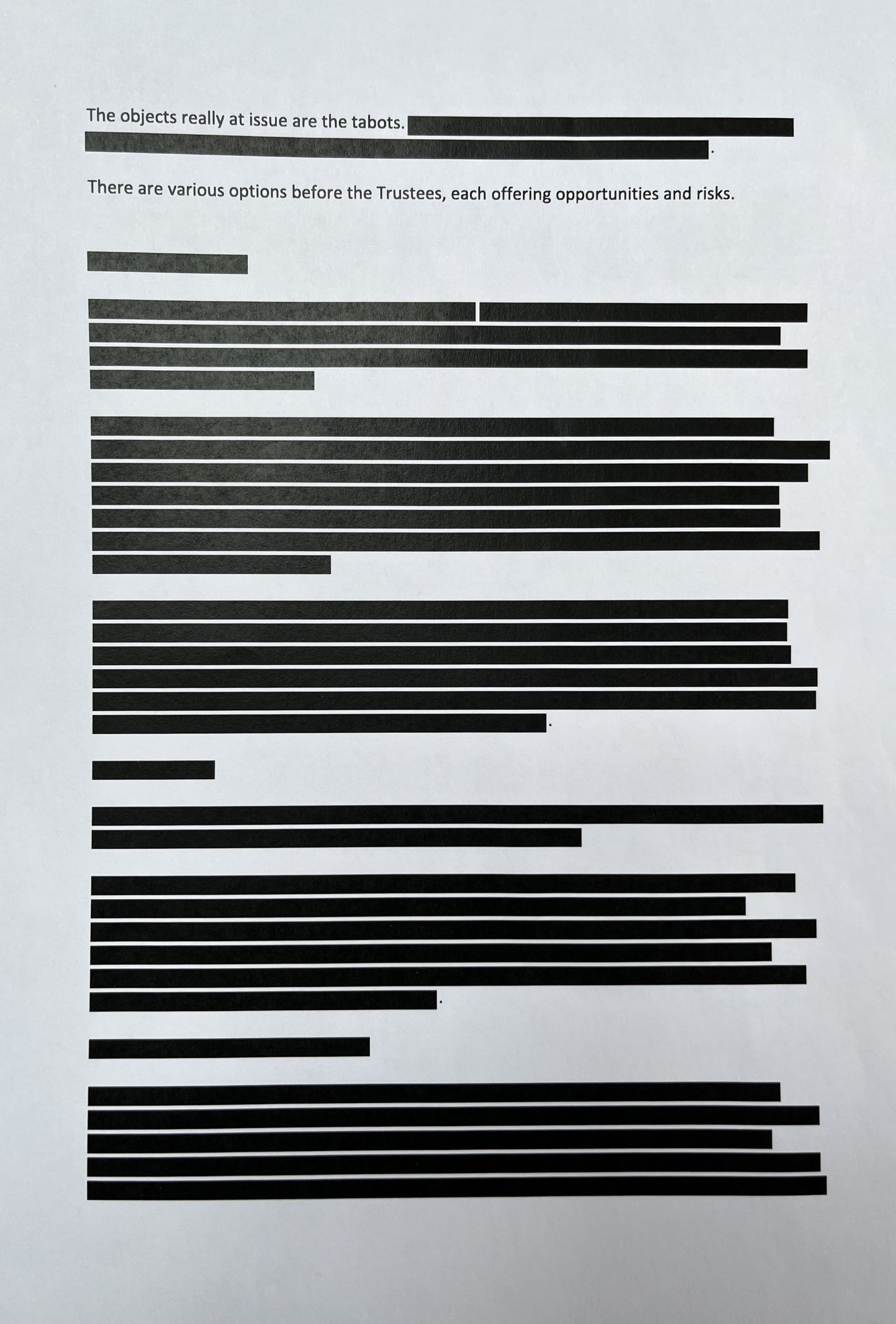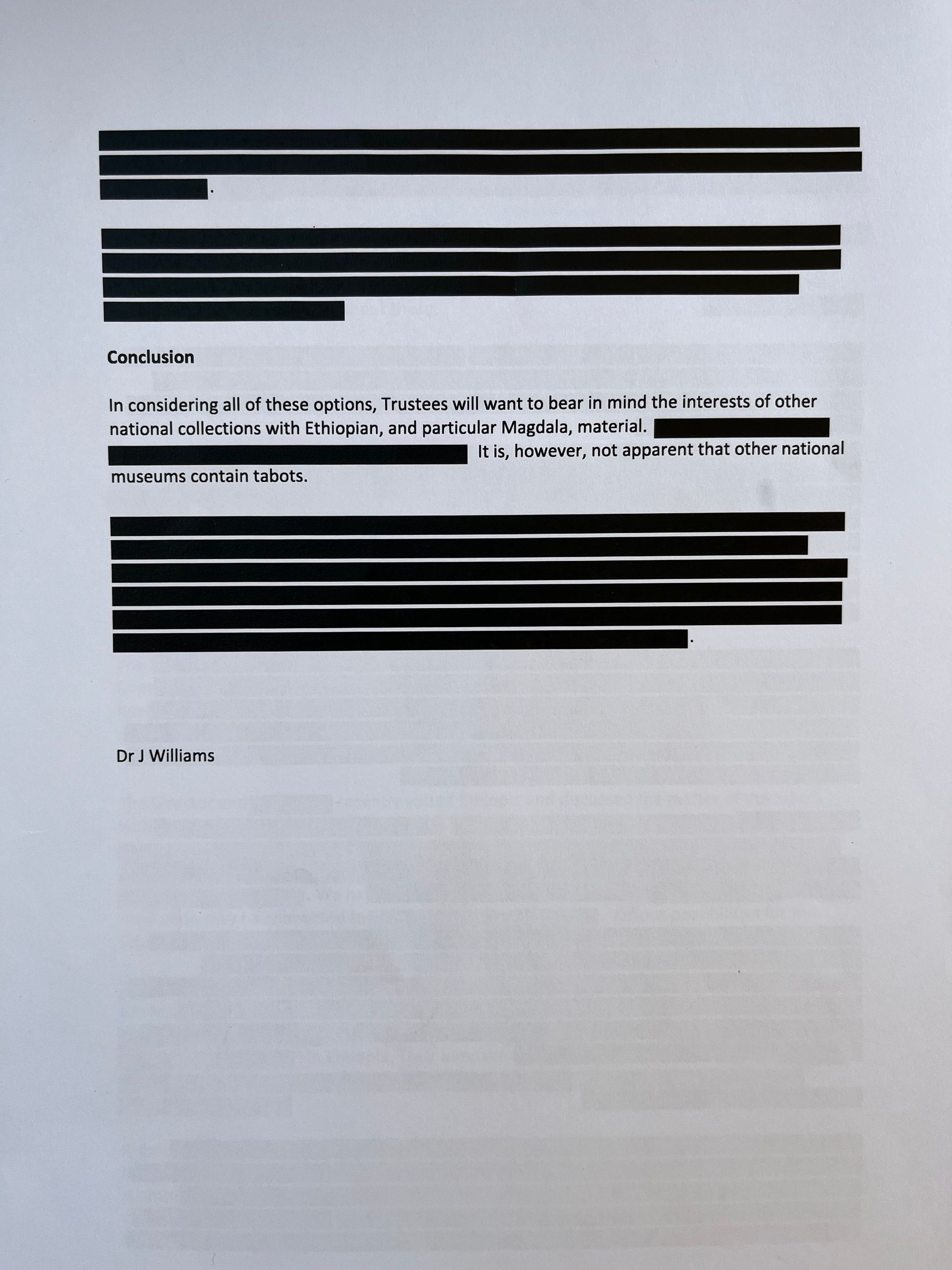Cultural Restitution
SHARE ARTICLE
The recent damage to the British Museum’s reputation as a secure custodian of global treasures cannot be overstated. But is the delay in reporting these widespread thefts an isolated event, or is the Museum knowingly withholding information on other sensitive issues?
Failures in the Museum’s internal security and holes in the Museum’s cataloguing will add further fuel to this chaotic fire, making identification and tracking down the reported two thousand stolen objects far more difficult than chairman George Osborne is claiming.
But as the sequence of events begins to unravel, another concern is emerging of a national institution seemingly going out of its way to avoid giving comprehensive responses to questions they’d prefer not to answer.
In his resignation statement, the Museum’s director Hartwig Fischer confirmed the Museum “did not respond as comprehensively as it should have in response to the warnings in 2021.”
The investigation now underway by the Metropolitan Police, as well as the independent review commissioned by the Museum itself, may reveal whether this failure to address warnings in 2021 amounts to a ‘cover-up’. In the meantime, where else might the Museum be less than willing to give us the full and complete story?
It's been exactly twelve months since Returning Heritage, represented by the legal firm Leigh Day, made the first of four Freedom of Information Act (FOIA) requests to the British Museum about its collection of eleven Ethiopian Tabots. However, almost every one of these requests for information has been rebuffed. So, could this be a another issue where the Museum may be keen to stifle full disclosure?
We don’t believe any of the information we’ve requested is contentious. We've asked: How many restitution requests has the Museum received for the Tabots since 1990? When did Trustees meet to discuss these requests? What advice did they receive and what actions did they agree? If they have agreed to retain the Tabots, on what grounds do Trustees consider these objects are fit to be retained?
The Museum has been forthright and uncompromising explaining why it retains full ownership of the Parthenon sculptures, the Benin Bronzes and other contested artefacts. And we understand why the Museum’s governing Act currently prevents it from returning these highly visible, trophy exhibits. But why is the Museum so unwilling to engage on the issue of the Tabots?
This small group of eleven extremely sacred objects, nine of which were looted at Maqdala by a British expedition in 1868, remains sealed away, out of sight from museum staff, scholars and the general public. Quite possibly, they are unique within the Museum’s entire collection: unlike almost all the Museum's other contested objects, Trustees can decide to return these Tabots by drawing on powers that already exist within the British Museum Act 1963. A legal opinion prepared in 2021 by Samantha Knights KC of Matrix Chambers and circulated to all Trustees that year confirmed the Tabots do meet the criteria for legal deaccessioning under section 5(1)(c) of this Act.
As they can never be exhibited, photographed or studied, it's clear they are 'unfit to be retained' by an institution that exists for educational purposes. Nobody will ever miss them as nobody is ever allowed to see them. And following an undertaking given by the British Museum, nobody but priests of the Ethiopian Orthodox Church ever will.
We want to understand why the Museum’s Trustees are either unaware of their role in deciding the future custody of these Tabots or may have chosen deliberately not to deaccession them - despite the powers they possess under the existing Act.
Greater transparency over their decision process and giving answers to our Freedom of Information requests would be a good place to start. Since September 2022 we’ve made four FOIA requests to understand the Museum's decision process regarding the Tabots, plus we’ve made two additional requests for an internal review of their decisions not to share this information. But the Museum remains stubbornly unwilling to provide answers.
We might have given up all hope of ever getting the full picture, except that two of the papers we've extracted during this information gathering process confirm that Trustees have received a briefing about the Tabots on at least two occasions. However, the Museum is still unwilling to share the detail of what these briefings comprised.
We've learnt, for example, that almost twenty years ago (March 2004) Jonathan Williams, Fischer’s deputy who is standing down during the investigation of the current debacle, presented a paper on the Tabots to a meeting of the Trustees. The copy we recovered is heavily redacted (see below), so it’s impossible to know what ‘various options’ were actually put before the Trustees and what decisions they reached. Williams presented another briefing note to the Trustees prior to a board meeting in December 2019. This second note is also alarmingly redacted. Clearly, there are things the Museum does not wish the public to see.


Redacted pages from a paper about the Tabots presented to British Museum Trustees in March 2004
The public is entitled to request information from public authorities about their activities and, in turn, those organisations may refuse to provide that information if they believe the information is exempt. In this case, the Museum is relying on two principal exemptions, maintaining that the public's interest lies more in favour of withholding information than disclosing the information we’ve requested. We consider both exemptions are being applied improperly.
The first relates to section 27 of the Act (International relations), where the Museum maintains that disclosure of the information “would be likely to prejudice relations between the United Kingdom and the government of Ethiopia.” No supporting evidence to this argument has been given and as both the Ethiopian government and the Ethiopian Orthodox Church have made it clear in public they wish to see the Tabots repatriated, the Museum’s refusal to share information is more likely to prejudice Anglo-Ethiopian relations than move them forward.
Full disclosure presents neither a threat to the UK’s national collection nor to diplomatic relations with Ethiopia. Instead, it would help the Ethiopian nation and the wider public understand the reasons why the Tabots have not been returned. Trust and confidence between the Museum and Ethiopia can only be enhanced by greater transparency.
The Museum has also deployed the exemption in section 36 of the Act (Prejudice to the effective conduct of public affairs), arguing if they were to release the information we’ve requested, “it would be likely to inhibit the ability of the Museum to engage freely and openly in constructive dialogue with Ethiopian representatives,” and would be “detrimental to the quality of its decision making.”
The Museum has confirmed to us that it does recognise the public interest in the issue of repatriation: “Disclosure of information revealing the substance of discussions with the Ethiopian church and government on the Ethiopian Tabots would be relevant to that debate by demonstrating how the Museum is reacting to individual repatriation requests”. So, why all the secrecy? And what value is there in the Museum’s current process, which they say is based on a free and open dialogue, if it takes twenty years of dialogue and has still reached no decision?
Public scrutiny of this decision-making process does matter. As highlighted, the Tabots are possibly unique within the Museum’s entire collection. It is precisely because Trustees can elect to return these objects that there's a legitimate public interest in understanding why it seems they believe the opposite.
The Trustees themselves have remained silent, despite the fact it's the Board and not the Museum’s executive that decides whether or not to return the Tabots. Indeed, as the Museum has so far failed to disclose almost any of the information we've requested, we cannot be entirely sure the Trustees are even aware that section 5(1)(c) of the Act (‘unfit to be retained’) allows them to return the Tabots legally.
This absence of transparency in the Museum’s decision-making process presents just as great a risk to the Museum's reputation and integrity as news of the widespread thefts has damaged the Museum’s claim for secure stewardship. Greater transparency would demonstrate the Museum’s commitment to the gravity of Ethiopia’s case for recovering the Tabots. It would also improve the quality of their dialogue and improve the scope for a free and frank engagement with Ethiopia’s government and the Ethiopian Orthodox Church.
The British Museum has rarely been in more urgent need of better public relations. George Osborne says the current incident only reinforces the case for the “reimagination of the Museum”. We totally agree. However, this reimagination should not be confined to the building and exhibition space alone.
It will fall to the recently announced interim director and deputy director to handle the immediate fall-out from the Museum's present crisis. Security and cataloguing will, of course, be high on their agenda. But a new permanent management team must prioritise a root and branch review of how the Museum engages with the wider public.
From their silence to date, it seems the British Museum's enthusiasm to exploit exemptions suggests they have no interest in providing answers to questions that are in the public interest. The new team should waste no time initiating a more honest and open dialogue with stakeholders, communities of origin and the general public. Restorative justice demands transparency. The Museum should start by giving us the full story about the Ethiopian Tabots.
Photo: The Great Court, British Museum
Courtesy of The British Museum
More News



